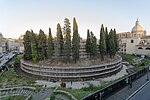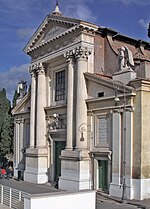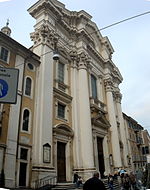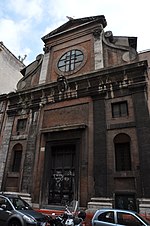Mausoleum of Augustus
Ancient Roman buildings and structures in RomeAugustan building projectsBuildings and structures completed in the 1st century BCCampus MartiusMausoleum of Augustus ... and 3 more
Mausoleums in RomeRoman emperors' mausoleumsRome R. IV Campo Marzio

The Mausoleum of Augustus (Italian: Mausoleo di Augusto) is a large tomb built by the Roman Emperor Augustus in 28 BC on the Campus Martius in Rome, Italy. The mausoleum is located on the Piazza Augusto Imperatore, near the corner with Via di Ripetta as it runs along the Tiber. The grounds cover an area equivalent to a few city blocks nestled between the church of San Carlo al Corso and the Museum of the Ara Pacis. The mausoleum has been restored and reopened to the public in March 2021, after fourteen years of closure.
Excerpt from the Wikipedia article Mausoleum of Augustus (License: CC BY-SA 3.0, Authors, Images).Mausoleum of Augustus
Piazza Augusto Imperatore, Rome Municipio Roma I
Geographical coordinates (GPS) Address Website External links Nearby Places Show on map
Geographical coordinates (GPS)
| Latitude | Longitude |
|---|---|
| N 41.906111111111 ° | E 12.476388888889 ° |
Address
Mausoleo di Augusto
Piazza Augusto Imperatore
00186 Rome, Municipio Roma I
Lazio, Italy
Open on Google Maps










